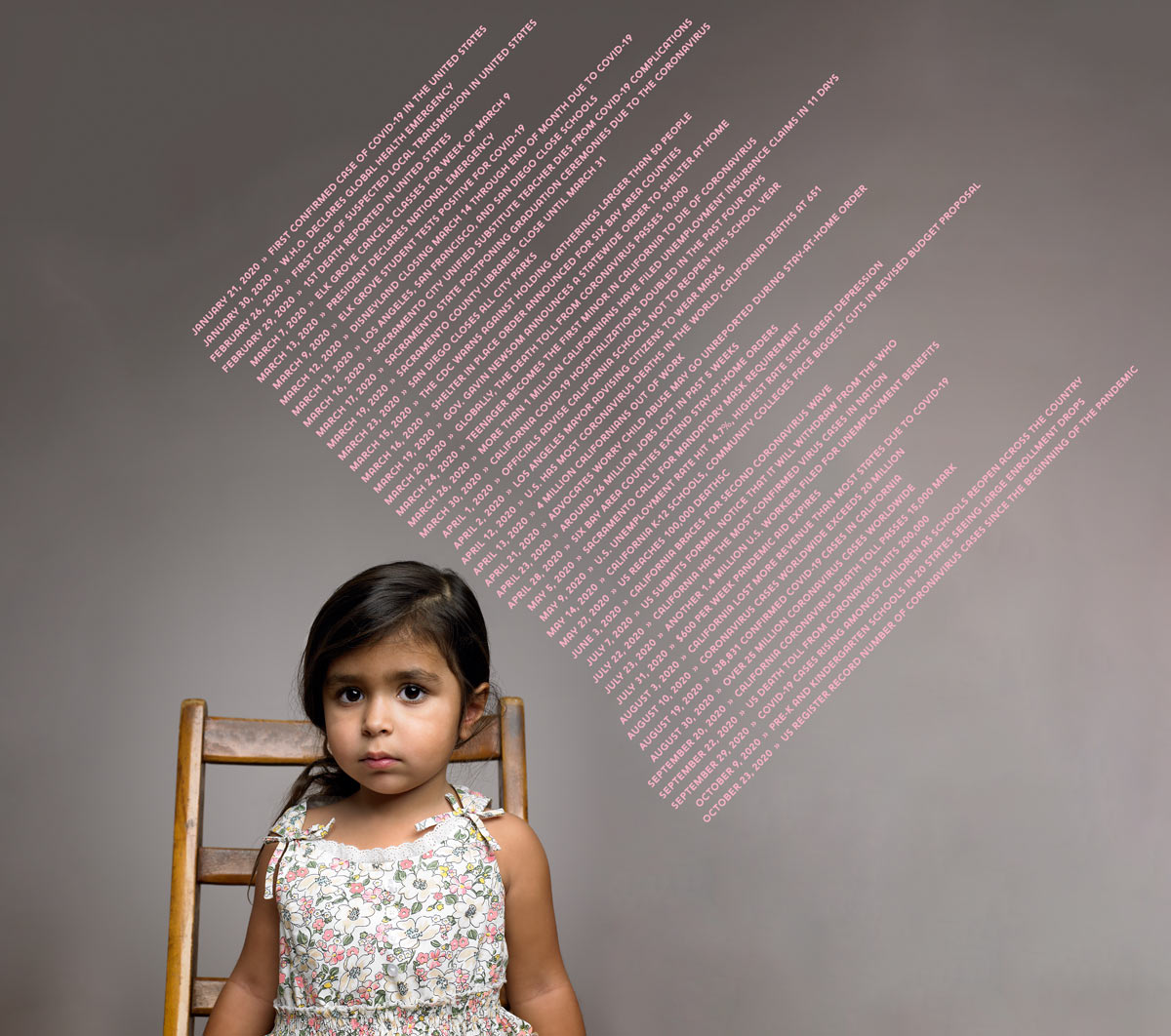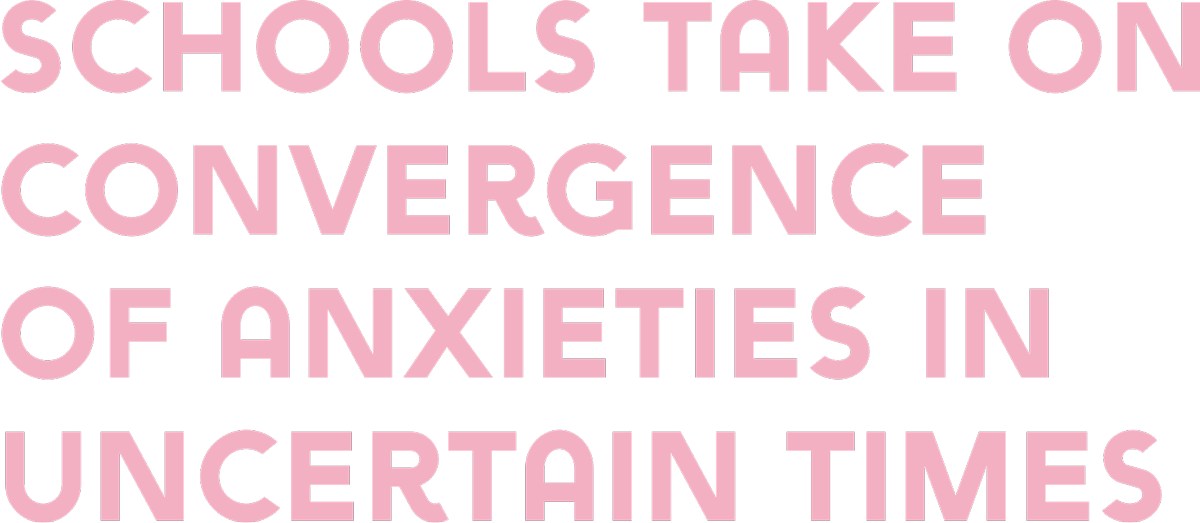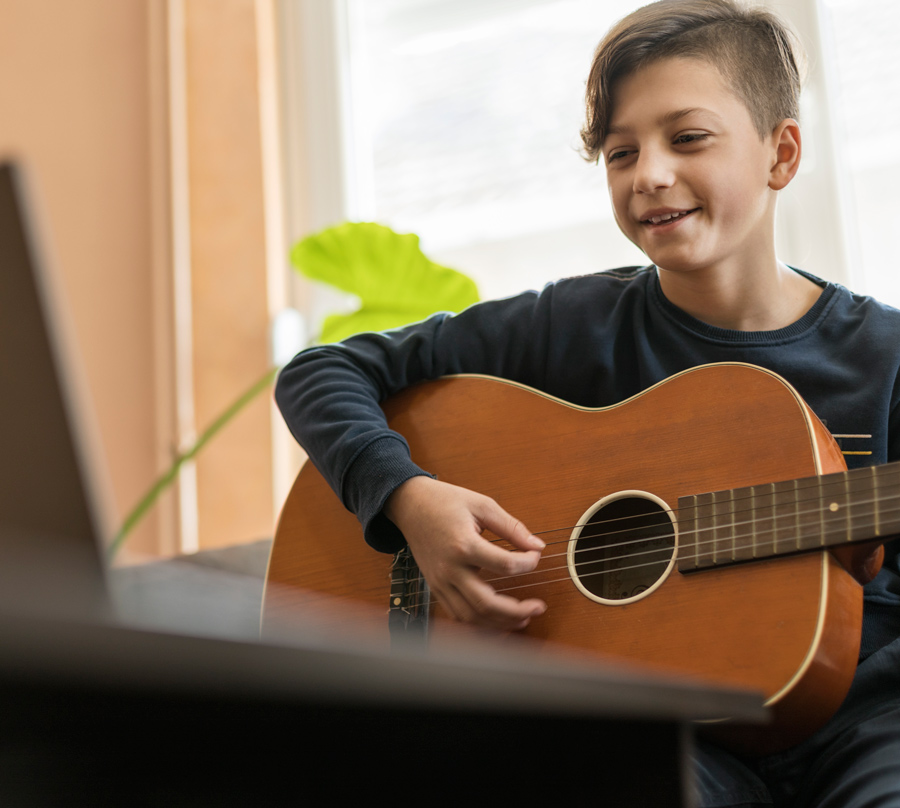


At the end of June, the Centers for Disease Control and Prevention surveyed roughly 10,000 Americans about their mental health, finding symptoms of anxiety and depression were up sharply between March and June compared to the prior year. Despite all of the pressures facing adults, children seemed to be the hardest hit. In a national survey later in the summer, more than three in four school social workers reported that a majority of students at their schools needed serious mental health supports in the wake of the COVID-19 pandemic, school closures, economic hardship and a convergence of other factors.

 hat was before a COVID-19 resurgence and future uncertainty saw many local educational agencies’ plans for a hybrid schedule approach — offering at least partial in-person instruction, relationships and a familiar setting for student support services — derailed. Many schools’ reliance solely on distance learning for additional weeks, if not months, to come has elevated mental health to a level of concern on par with that of learning loss and academics. The stakes are incredibly high, experts say.
hat was before a COVID-19 resurgence and future uncertainty saw many local educational agencies’ plans for a hybrid schedule approach — offering at least partial in-person instruction, relationships and a familiar setting for student support services — derailed. Many schools’ reliance solely on distance learning for additional weeks, if not months, to come has elevated mental health to a level of concern on par with that of learning loss and academics. The stakes are incredibly high, experts say.
“Learning is still happening. Our teachers and our educators are working tremendously hard to make learning happen,” said San Mateo County Office of Education board President Hector Camacho Jr. “But we are concerned about the long-term consequences of this community trauma that’s being experienced in these individual traumas.”
“Trauma has an impact on the brain’s ability to learn new material and retain it, so mental health support is not an extra,” said Mary Briggs, CSBA’s Director of Research and Education Policy Development. “It’s a foundational element that helps ensure students learn and thrive.”
The response has varied as districts and county offices of education rise to meet yet another challenge in an obstacle-ridden 2020. In virtual settings, teachers and administrators are striving to establish more of a connection with and between students, while some school sites have engaged children’s needs by welcoming small-group cohorts back to campus.
The pressing situation, amid budget difficulties for many LEAs, has led to previously unseen cooperation between districts and county offices of education, and between county offices and other local government agencies, to offer programs and services.
State Board of Education President Linda Darling-Hammond, a staunch advocate for the foundational importance of social-emotional learning, acknowledged the wide-ranging efforts of LEAs at the board’s September meeting. “I am very heartened by the recognition of the importance of social and emotional learning,” she said. “Virtually every district that I connect with says that we are starting out with a social and emotional learning agenda, a platform, a way to figure out what supports students need and also to engage in social-emotional learning and practices on a regular basis.”
But much work remains in the eyes of many, including Jami Parsons, the learning support director for the Orange County Department of Education who also serves on the state’s Social-Emotional Learning Task Force.
“That’s been a desire over the last several years, for districts to embed [SEL]. They’ve struggled with it, but I think now, more than ever, they’re going to see how critical it is,” Parsons said. “And I think because of the long term, this is a continuous trauma, for adults in the system, our students in the system. And for us to overcome this, we’re going to need to continue to focus on SEL over the next several years.”
Camacho wholeheartedly agreed with the urgency at hand. “This is when we really go all in, and this is when we need leadership in terms of funding, time, resources to say, ‘we are going to be a child-centered county, which we’ve committed to, and we are going to be a child-centered state.’”
Still, Morgan, a credentialed school counselor and licensed therapist, said the pandemic has introduced entirely new variables that no one could have prepared for. “There’s going to be years to come of grief that we’re going to have to deal with” he said. “Two-hundred thousand people died so far and, however anyone views that number, it’s still very, very upsetting and causes a lot of grief and anxiety.”
Morgan said his wife, a special education teacher in the Rocklin Unified School District in the Sacramento suburbs, has reported that the contagious anxiety about when and if students and staff will return to school is driving much of the fall’s anxiety up and down the state. Parsons agreed.
“I know that we are hearing from districts that I think the biggest challenge is the unknown, and that’s true for the adults in the educational institutions as well as the students,” Parsons said. “‘When can we go back to school? What’s it going to look like when we go back to school?’ And certainly for the parents as well. So I think there’s a lot of nervousness around that.”
The digital divide and immediacy of providing in-person mental health and wellness services has played a large role in debates about when students should return to the classroom. “If districts are rural, small and they’re spread out over a diverse area, I think you’re talking about kids who are far more isolated, so getting them onto the campus is going to be an even bigger deal,” CSBA’s Briggs said.
For chronically underfunded and understaffed districts and schools, Morgan said flexibility and adaptability are crucial elements for board members and other leaders during a turbulent school year. Considerations during distance learning include increasing telehealth offerings, expanding duties for already qualified staff such as school counselors, ensuring teachers are holding check-ins with all students and, as possible, reprioritizing program funding for the remainder of the academic calendar.
“Ask for a presentation on what’s already working in the eyes of their student support staff. And try to make it their business to look into ‘how are we going to support our students now. And how’s the model going to have to change?’” Morgan said. “If we were spending money on school campus security in the past, can you switch that over quickly to support students since they’re at home?”
For a majority of California’s districts, however, even the most agile and effective response will require funding, coordination and reliance on another source. “Their county office has to be stepping up big time when it comes to that, because they have to pool their resources,” said Briggs.
“I can tell you as a mom of a middle schooler and an elementary school child, relationships are such a struggle right now to foster for kids,” said Stacy Deeble-Reynolds, OCDE Student Achievement and Wellness director.
One particular shortcoming with the highly structured and time-sensitive setting of digital learning is a lack of spontaneous or casual interaction between students and teachers and other staff, Deeble-Reynolds said. “They are struggling to just engage students in the ways that they have before, in those other extracurricular ways that we don’t necessarily have a chunk of time reserved to the school day for students to have the benefit of that.”
Among the many ways the department is supporting mental health needs through distance learning and beyond, OCDE is collaborating with Western Youth Services and Children’s Hospital of Orange County to develop a Mental Health Toolbox aimed at mitigating the effects of COVID-19 on children’s mental health by using a tiered model of prevention, identification and early intervention. The effort is funded by the federal CARES Act and will consist of 27 virtual self-paced workshops and courses, customized for audiences of students, parents, school staff and community members and available in multiple languages.
“Really the idea is to jump in right now while they’re going through this to provide them with extra support,” Deeble-Reynolds said. “Because even just the basics, right? Human connection, all the things that we know kids need. They’re not getting that at all. It’s not like just for a week they’re at home. My kids are in Long Beach Unified; the district is not even opening up to kids coming back to school at all until February.”
The OCDE is also providing several free trainings for educators, covering trauma-informed practices, support for social-emotional learning in the classroom, restorative practices and suicide-risk assessment.
In the Bay Area, the San Mateo COE, in partnership with San Mateo County’s Behavioral Health and Recovery Services and 12 school districts, recently received a four-year, $6 million grant from the state’s Mental Health Services Oversight and Accountability Commission to build the capacity of schools to provide mental health supports to students.
“How are we going to provide the curriculum, even in this new format, to make sure that they’re receiving that mental health care that they were receiving in the classroom and the physical space?” Camacho said. “This grant is an extension of how do we do what we were doing even more so in distance learning because of the additional traumas caused by staying at home and for many of our families, economic hardships, all of these things.”
“With COVID-19 compounding the stress that students are experiencing, this grant comes at an important time,” added San Mateo County Superintendent Nancy Magee.


While educators can’t replicate an in-person setting of collaboration and stirring ensembles, Stone said they are advancing existing relationships or forging new ones — and offering a change of pace from the monotony of other digital coursework. When a teacher is effective and makes the music or arts class fun and interactive, the students want to be there,” he said.
“What I see from observing in Zoom classes is that the music teachers are considered in high esteem by their students because they have done experiences with their teachers of going on trips and performing together,” Stone said. “And because of that experience, they look forward to going to music because they know they’re going to get to continue that teacher–student relationship that they’ve already begun.”
The arts and other non-core subjects are often the first to go in a budget crunch or may be an afterthought in the realm of distance learning, but Bakersfield City SD maintained its music department’s staffing at current levels this year, and so far student participation looks healthy.
“It’s not a time to take that away from students because, as we know, the mental health of students right now is fragile because many of them feel isolated at home,” Stone said. “And I think when we come out of COVID-19 and are back to school face to face, we’ll see more demand from parents to be in music programs so they can have that community.”
Briggs and Parsons singled out a section of the Learning Continuity and Attendance Plan, which replaced this year’s Local Control and Accountability Plan for LEAs, for emphasizing the importance of mental health for all in a school setting. “One of the aspects was called social, emotional learning supports for students and staff,” Parsons said. “Because we can’t forget to take care of the adults in this work as well because they are also experiencing anxiety through the roof.”

- Assess what was working before COVID-19 happened and how students were being provided with the mental health supports that they needed to learn and access the curriculum more effectively.
- Adapt anything that was already effective in improving student well-being when possible under current limitations. This may include reprioritizing or retraining credentialed staff to shift their focus from academic guidance to providing additional mental health supports.
- Amend, or cut, what cannot be adapted or what wasn’t working well.
- Add resources and staff in the critical area of student support. “Even as many of us are being asked to make some very deep cuts financially, this would be an area to prioritize as we move forward to heal from a lot of trauma, and loss and grief that we’re seeing,” he said.
- Avoid cutting the only people on campus who have formal mental health training.



- A 2020 virtual Annual Education Conference session, “Improving Mental Health in School Communities,” includes a thorough presentation on many best practices and key issues.
- Webinar for governance teams: In the final of five webinars hosted by CSBA this summer to ensure governance teams have the most up-to-date information and analysis of the current education landscape, experts offered insights into how trustees can prioritize mental health supports. Find the webinar recording and related materials at http://covid19.csba.org/covid-19/.
- New sample board policy: CSBA’s new sample Board Policy 5141.5 – Mental Health is a starting place for local educational agencies that want to go beyond the requirements of Education Code 215 — included in the mandatory BP/AR 5141.52 – Suicide Prevention — to address broader mental health issues facing all students. The policy recognizes that students’ emotional well-being and mental health contribute to their ability to perform to their full academic and personal potential.
- Conversation with Dr. Nadine Burke Harris: The summer 2020 edition of California Schools magazine featured an in-depth interview with California’s first Surgeon General about how adverse childhood experiences (ACEs) can impact education, what schools can do to help lessen toxic stress in children and how the COVID-19 pandemic is affecting student well-being.
Board members, administrators and parents alike therefore must remember that teachers and staff will also need patience and support in uplifting students during these difficult times. This common experience and understanding, Morgan said, will eventually pave the way for greater inroads to discussions about the critical importance of mental health policy, funding and staffing at the school level. “This has helped remove some of the stigma,” he said. “I think normalizing the human experience and just saying, ‘this is something that’s part of life and right now for all of us.’”
Andrew Cummins is a former writer for California Schools.